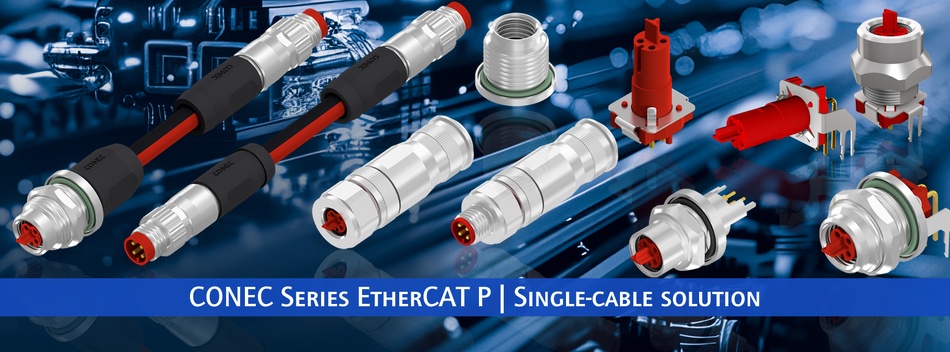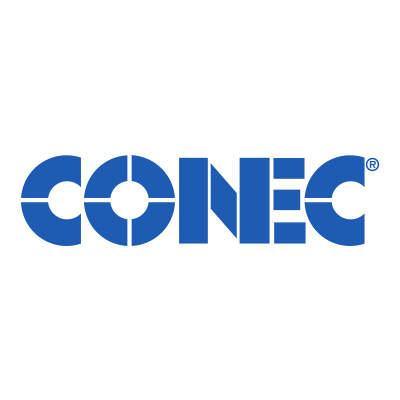The well-known EtherCAT communication system, based on Ethernet transmission technology, is particularly notable for its high-speed data transfer (real-time Ethernet). This capability is essential for many applications, such as synchronization in automation technology. The wiring for this system uses a 4-pin shielded M8x1 connector and standard Ethernet cable, with a separate power supply line. EtherCAT P is an advancement of the globally established and standardized EtherCAT technology. The key feature of EtherCAT P is its combination of ultra-fast EtherCAT communication with a 24V power supply. In this system, a two-wire data pair provides both data transmission and power supply (Us) for the system and sensor with 24V and 3A.
The second data pair carries data and the peripheral voltage (Up) for actuator power. By directly integrating the power supply into the 100 Mbit line in EtherCAT P, a compact and cost-effective device connection is achieved.
Since separate power lines are no longer needed, this is referred to as a "single-cable solution." To prevent cross-mating with other standardized M8x1 connector systems, a new coding has been developed and standardized under the term "P-coding" in IEC 60176-2-114.
The distinctive features of this coding include the red color of the contact carrier and the leading T-contour on the face of the coupling contact carrier, which prevents cross-mating with other codings.
The second data pair carries data and the peripheral voltage (Up) for actuator power. By directly integrating the power supply into the 100 Mbit line in EtherCAT P, a compact and cost-effective device connection is achieved.
Since separate power lines are no longer needed, this is referred to as a "single-cable solution." To prevent cross-mating with other standardized M8x1 connector systems, a new coding has been developed and standardized under the term "P-coding" in IEC 60176-2-114.
The distinctive features of this coding include the red color of the contact carrier and the leading T-contour on the face of the coupling contact carrier, which prevents cross-mating with other codings.

Overmolded Connectors:
Currently, shielded overmolded versions with GBX, PUR, UL Cat 5e 4xAWG22 cable quality are available in standard lengths. For 100 Mbit device connections, plug-to-plug connection cables are almost exclusively used.
Configurable Connectors:
Configurable connectors are available in axial coupling and plug variants, with options for screw connections (coupling) or crimp connections (coupling, plug).
Flanges for Direct PCB Mounting:
A comprehensive range of flanges is available for device connections, offering users various installation options. Continuous shielding from the flange housing to the PCB is achieved using a stamped metal plate. Molded contact tongues establish a radial connection to the flange housing, while connection to the PCB is made via snap-in elements followed by soldering. The materials used are suitable for wave soldering. A special flange version features an overmolded cable and an additional connector on side B, preferably P-coded, making it ideal for wiring through a wall, such as in a control cabinet.
Currently, shielded overmolded versions with GBX, PUR, UL Cat 5e 4xAWG22 cable quality are available in standard lengths. For 100 Mbit device connections, plug-to-plug connection cables are almost exclusively used.
Configurable Connectors:
Configurable connectors are available in axial coupling and plug variants, with options for screw connections (coupling) or crimp connections (coupling, plug).
Flanges for Direct PCB Mounting:
A comprehensive range of flanges is available for device connections, offering users various installation options. Continuous shielding from the flange housing to the PCB is achieved using a stamped metal plate. Molded contact tongues establish a radial connection to the flange housing, while connection to the PCB is made via snap-in elements followed by soldering. The materials used are suitable for wave soldering. A special flange version features an overmolded cable and an additional connector on side B, preferably P-coded, making it ideal for wiring through a wall, such as in a control cabinet.

